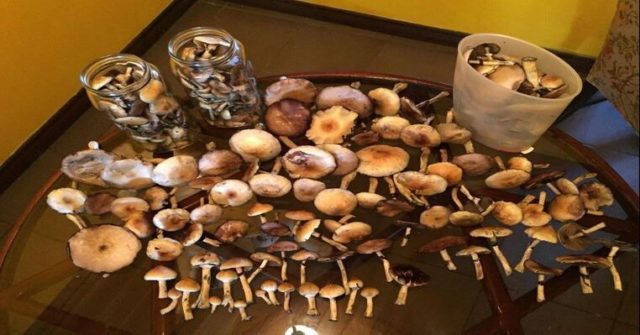There are more than 150 species of psychedelic or hallucinogenic mushrooms worldwide, of which we can find at least 6 in the national territory. In this article, we describe each of these species so you can identify them appropriately.

So, with this mini-guide, you can go out to “hunt mushrooms” with the basic knowledge to differentiate fungi with intoxicating and salutogenic effects from those that will give you a stomach upset passenger or even kill you.
In our country, there are at least 3 genera of hallucinogenic mushrooms: Psilocybe, Panaeolus, and Amanita. The genus that has more species is the first; for the other 2, only one species is known. Psilocybe and Panaeolus are known as psilocybin fungi because their main psychoactive molecule is psilocybin.
These fungi have very low toxicity and a lack of addictive potential. On the other hand, fungi of the genus Amanita contain ibotenic acid and muscimol. These psychoalterant compounds are more toxic than psilocybin, although they do not generate addiction either.
Now, both psilocybin and Amanita mushrooms are considered psychedelic since they “manifest the mind” or “expand consciousness”. That is, they cause a state of hyper-associative cognition in which cerebral and mental processes are less constrained.
In addition, they generate profuse and complex imagery (visions), robustly modify the perception of time, space and personality, and facilitate deep existential experiences that have sustained beneficial effects.
It is ideal to implement several simple measures of harm reduction when collecting and ingesting wild mushrooms. First, if possible, corroborate the identification with an expert; In case of doubt, better to abstain from consuming. Second, do not use mushrooms in a state of decomposition, and wash well with water those that are fresh and firm before consuming them. Third, do not consume mushrooms collected in contaminated places because they can absorb heavy metals and other toxic substances. Finally, it is advisable, if you want to experiment, start with low doses, and have a safe and comfortable place.
It is also preferable that a reliable person who does not consume the mushrooms is present to provide any necessary support in case of a, particularly difficult experience.
Internet is the Communications Tool Most Used by Costa Ricans
Let’s see, now, the main characteristics of each of the species that you will potentially find when exploring pastures, pastures, and forests of our country:
- Psilocybe cubensis
Habitat: on cow manure or on the pasture floor.
Distribution: the whole country, both high and low areas.
Observations: it presents a ring with dark brown coloration as well as spots with a blue-greenish tone throughout the fruiting body when being manipulated.
Medium power
- Psilocybe mexicana
Habitat: in pastures and paddocks.
Distribution: the whole country, both high and low areas.
Observations: presents a hat and a slightly striated margin, as well as spots with a blue-greenish tone throughout the fruitful body when being manipulated.
Power: medium-high
- Psilocybe aztecorum
Habitat: on the ground and in remains of rotting wood.
Distribution: open forests in mountainous areas, mainly in high areas.
Observations: yellowish-caramel globular shape hat (without streaks), it presents blue-green spots on the whole fruitful body when it is manipulated with force.
Power: Medium-high.
- Psilocybe caerulescens
Habitat: on the ground and in remains of rotting wood.
Distribution: open forests in mountainous areas, mainly in high areas.
Observations: carameled colored hat with a translucent-striated margin when wet, with greenish-blue spots on the entire fruiting body when handled.
Power: high.
- Panaeolus (Copelandia) cyanescens
Habitat: on cow manure or on soil in pastures and pastures.
Distribution: the whole country, both high and low areas.
Observations: small and of light gray color with yellowish tones, it presents spots with blue-green shade in all the fruitful body when being manipulated.
Power: high.
- Amanita muscaria
Habitat: on the soil in forests of pines, myrtles, and oaks.
Distribution: mainly in pine forests in Cartago and Cerro Chirripó, near ericaceous plants. High areas
Observations: its shape and color make it striking and unmistakable. Avoid consuming fresh; it is preferable to cook it previously. Do not use high doses (toxicity).
Power: very variable, medium-high.



